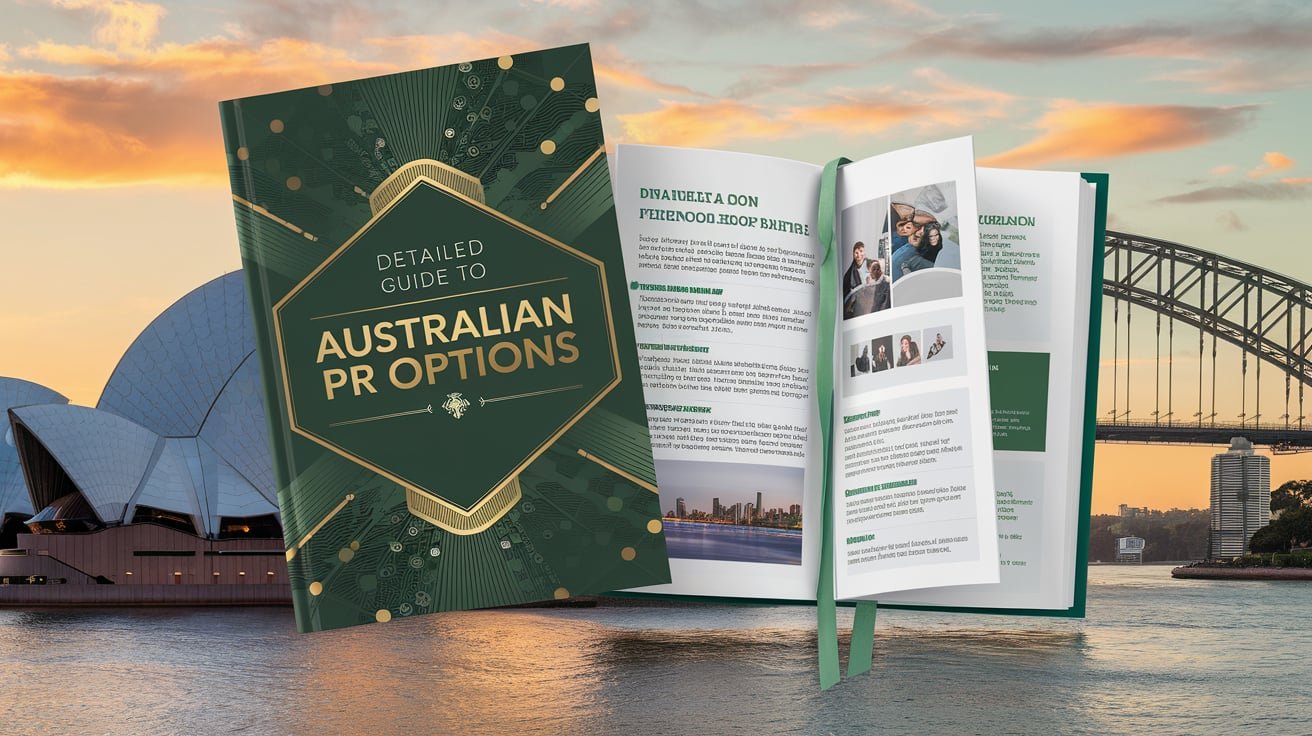Subclass 485 vs. 189 | Detailed Guide to Australian PR Options
Are you planning to stay in Australia a little longer? But you are confused between Subclass 485 vs. 189. Here is the complete guide to both temporary and permanent visa details.
This guide will answer all your questions, such as:
- What are the key differences between subclass 485 and 189?
- What is the purpose and duration of both visas?
- How do the eligibility criteria for both visas differ?
- How does subclass 486 lead to permanent residency?
- What are the other visa options?
- How do subclass 485 and 189 pave the path to permanent residency?
So, let’s get started with the detailed overview of the subclass 485 and 189.
Overview: Subclass 485 vs. 189
Australia makes the future of millions of people by giving them unlimited opportunities. The subclass 485 vs. 189 is counted among those chances.
Subclass 485 Temporary Graduate Visa is a kind of temporary visa. This visa is especially for students who have graduated from Australian institutions. Thus, this visa allows the students to stay and work in Australia even after graduation. Hence, they can easily use their skills to get their dream jobs.
The ratio of subclass 485 visa holders is very high in the world. Also, this visa can further open the doors to permanent residency. So, according to immigration experts,
“The visa is very popular among international students who get their education from Australia. So, almost 80% of visa applications are accepted.”
On the other hand, a Subclass 189 skilled independent visa is a permanent solution. Anyone who has specific qualifications and skills can apply for this visa. Thus, the visa holder will get the PR (permanent residency) in Australia. Moreover, it will give the freedom to work anywhere in Australia.
Both visa types have many differences in the eligibility criteria and processes. So, let’s have a look at the differences.
Key Differences between the Subclass 485 vs 189
There are major differences between the two popular visas.
1. Purpose and duration of stay: Subclass 485 vs 189
Subclass 485 gives the chance to work in Australia after graduation. Recently, the new updates have categorized the stay duration for different students:
- Up to 2 years (Bachelor student)
- Up to 2 years (Masters student with coursework)
- Up to 3 years ( Masters student with research or PhD student)
- Up to 5 years (Hong Kong or British national student)
Subclass 189 has the purpose of selecting skilled people from the world. Then, the Australian government grants the visa and permanent residency to such people. Thus, they contribute to the economy in a positive way. The duration of stay is forever for a lifetime.
2. Work rights and occupation: Subclass 485 vs 189
Everyone who is dreaming of doing hard work in Australia can choose subclass 485 or 189.
Because both visas give full work rights to the visa holders.
So the person can work without any hours restrictions.
Moreover, there is a difference in occupation criteria. In the case of subclass 485, the occupation must be on the Medium and Long-term Strategic Skills List (MLTSSL). This list may include engineers, IT experts, or healthcare professionals.
On the other hand, in case subclass 189 SOL (Skilled Occupation list) is valid. Thus, this list has demanding professionals such as software experts, doctors, nurses etc.
3. Eligibility requirements
Subclass 485 has the following requirements.
- The applicant must be below 50 years old.
- The applicant must have a complete two-year degree in Australia.
- The clearance of English skill tests such as IELTS.
- The visa application must be submitted within the first six months of the educational course.
Subclass 189 has the following requirements.
- The applicant must have the age below 45.
- The test score of Australian Immigration Points must be at least 65.
- A positive skill assessment for an occupation on the Skilled Occupation List (SOL).
- Clearance of health and charter tests.
Here is the table of comparison: Subclass 485 vs. 189.
| Feature | Subclass 485 (Temporary Graduate Visa) | Subclass 189 (Skilled Independent Visa) |
| Visa Type | Temporary work visa | Permanent residency visa |
| Duration | 18 months to 4 years | Indefinite (Permanent Residency) |
| Eligibility | For recent Australian graduates | Based on points system (65 points minimum) |
| Occupation List | No specific occupation list | Must be on MLTSSL (Medium and Long-Term Strategic Skills List) |
| Pathway to PR | No direct pathway | Direct permanent residency |
| Points Requirement | No points test required | Must pass points test |
| Application Fees | AUD 1,680 | AUD 4,115 |
| Health Insurance | Mandatory during stay | Not required, but recommended |
| Work Rights | Full work rights for visa duration | Full work rights as a permanent resident |
| Processing Time | 4 to 6 months | 7 to 9 months |
Comparison with Other Visas: Subclass 600, 482, 491, 489, and 481
Here is a detailed comparison of the different types of visas.
| Visa Subclass | Purpose | Duration | Pathway to PR (Permanent Residency) | Eligibility Requirements | Work Rights | Application Fees |
| Subclass 600 | Visitor Visa (Tourism, business) | Up to 12 months | No pathway to PR | Meet health and character requirements | No work rights | AUD 150+ |
| Subclass 482 | Temporary Skill Shortage (TSS) Visa | 2 to 4 years | Yes, under certain streams | Job sponsorship required | Yes, full work rights | AUD 1,290 – AUD 2,690 |
| Subclass 491 | Skilled Work Regional Visa (Provisional) | Up to 5 years | Yes, after 3 years of regional work | Points-based, regional sponsorship | Yes, full work rights | AUD 4,240 |
| Subclass 489 | Skilled Regional (Provisional) Visa | Up to 4 years | Yes, after regional work | Points-based, regional sponsorship | Yes, full work rights | AUD 3,755 |
| Subclass 485 | Temporary Graduate Visa | 18 months to 4 years | No direct pathway but provides work experience | Recent graduates of Australian institutions | Yes, full work rights | AUD 1,680 |
| Subclass 481 | No specific subclass 481 | N/A | N/A | N/A | N/A | N/A |
Pathway to Permanent Residency: Subclass 485 vs. 189
Many people get a straight pathway from subclass 485 to permanent residency.
The first option is subclass 189, which gives permanent residency to people who have experience in any skilled profession. Also, the people apply for 189 or 190 subclass visas. Both visas offer permanent residency.
So, many people find good job opportunities in Australia while having subclass 485. Then, they apply for the subclass 189, or 190.
The only difference is the visa type; otherwise, both give permanent residency. In the case of subclass 190, there is a need for nomination from the authorities in Australia.
Final Verdict

The subclass 485 vs. 189 is a debate till you don’t know about the details. So, first, check out the eligibility criteria. So, if you are studying in Australia, then subclass 485 is the best choice. However, if you are a skilled person with the quality of experience, then subclass 189 is the best choice.
So, hurry up and fill out the form from our website and start your dream journey in Australia.
FAQs
What is the primary purpose of the Subclass 485 visa?
The Subclass 485 visa allows international students who have recently graduated from an Australian educational institution to live and work in Australia temporarily. It is designed to help graduates gain relevant work experience in their field of study.
Can I transition from a Subclass 485 visa to a Subclass 189 visa?
Yes, many individuals on a Subclass 485 visa aim to apply for a Subclass 189 visa once they have gained sufficient work experience and meet the eligibility criteria, including the points test and occupation requirements.
What are the key differences between the Subclass 485 and Subclass 189 visas?
The Subclass 485 visa is temporary and focuses on allowing graduates to gain work experience, while the Subclass 189 visa is a permanent residency visa aimed at skilled workers who meet specific criteria. The Subclass 485 is time-limited, whereas the Subclass 189 grants indefinite residency in Australia.

2 Replies to “Subclass 485 vs. 189 | Detailed Guide to Australian PR Options”
najboljsa koda za napotitev na binance
16 Feb 2025Your article helped me a lot, is there any more related content? Thanks!
Daftar Binance
22 Mar 2025Can you be more specific about the content of your article? After reading it, I still have some doubts. Hope you can help me.